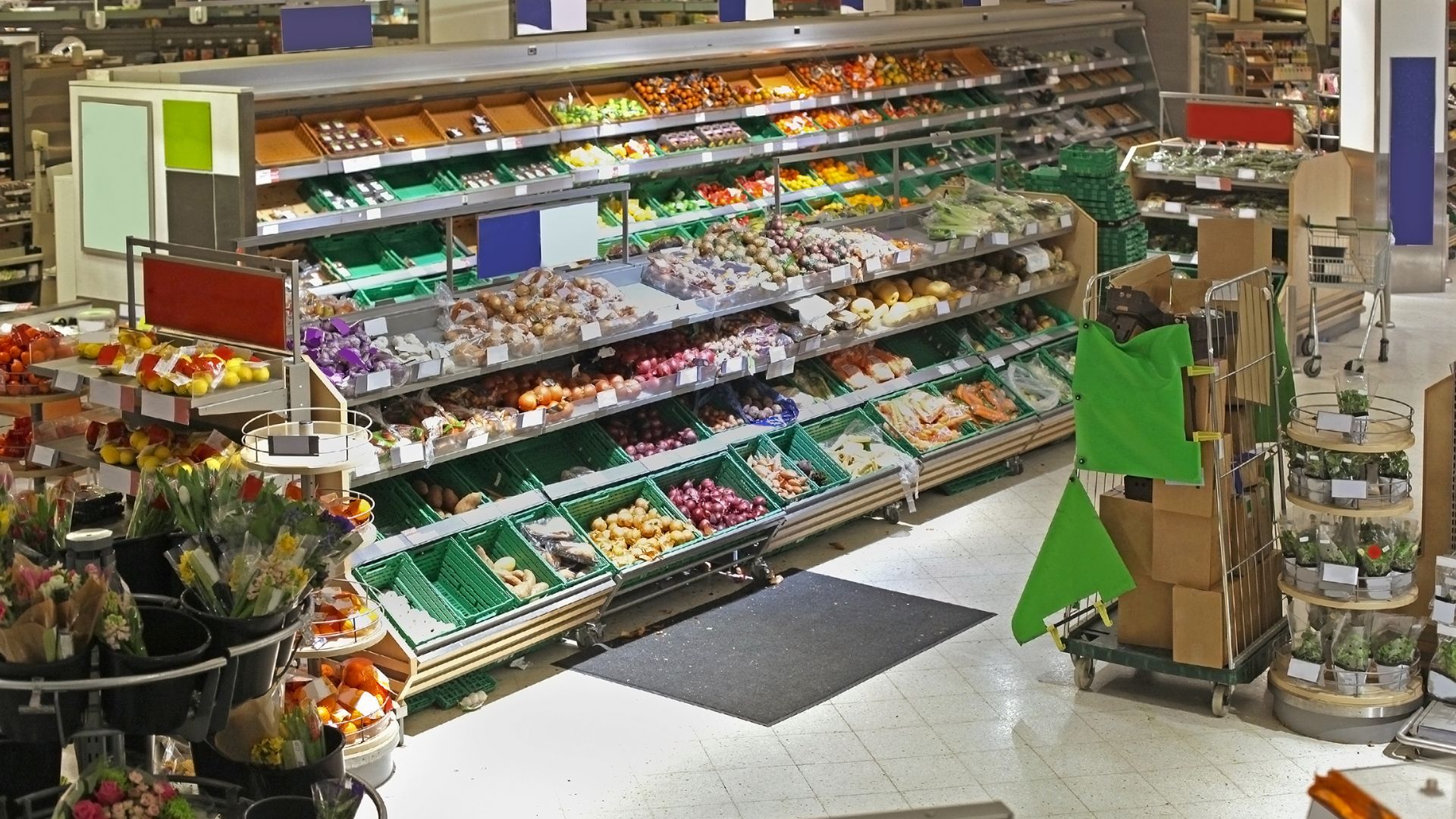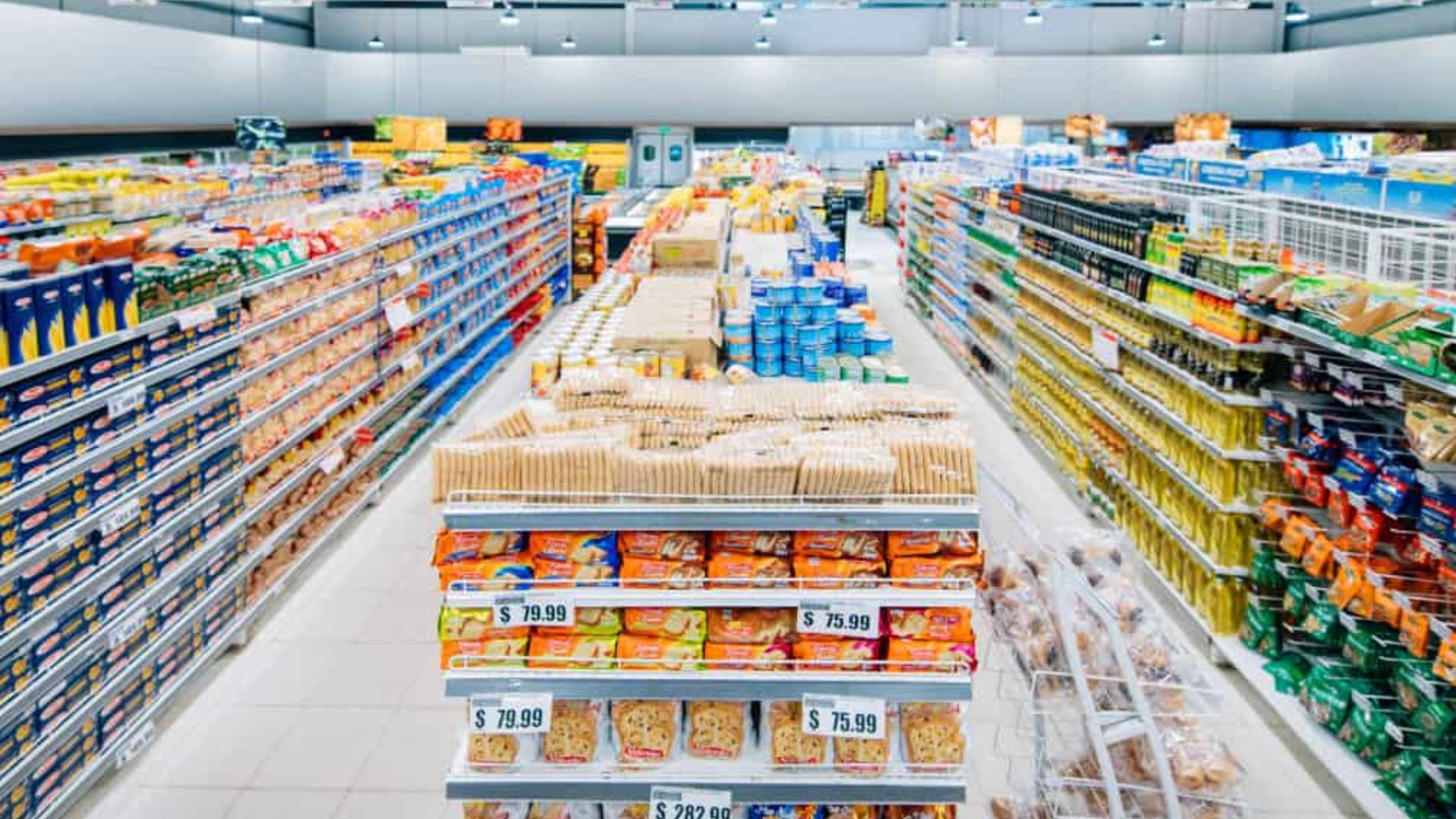Standing out on crowded shelves is one of the greatest challenges for retail store owners, especially in the competitive world of Consumer Packaged Goods (CPG). Ensuring that products are both visible and compelling is where retail merchandising comes into play. This strategic process involves arranging products effectively, optimizing shelf space, and designing displays that catch the eye and drive impulse purchases.
With over 70% of purchasing decisions made in-store at the point of sale, the way your products are presented can significantly influence buying behavior. For CPG brands, mastering the basics of merchandising isn’t just important—it’s essential. This article will guide you through the core elements of CPG merchandising, from minimizing out-of-stock situations to crafting visually impactful displays, helping you boost both product visibility and sales.
The Importance of Retail Merchandising for CPGs
CPG brands face the challenge of ensuring their key products are well-presented, accessible, and always in stock across every store in every location.. Retailers offer limited shelf space, making it vital for CPG brands to fight for their share of shelf space.62% of shoppers purchase items on impulse when attracted to an appealing display, showcasing the significant influence that well-executed merchandising has on consumer behavior.
Effective CPG merchandising helps brands maintain adequate stock, strong in-store visibility, ensuring products are well-placed and aligned with customer expectations. Winning at the shelf directly impacts sales and brand loyalty, making merchandising a key factor in overall retail success.
One of the major concerns for CPG brands in retail is minimizing out-of-stock (OOS) situations, which can significantly affect sales and customer loyalty.
Minimizing Out of Stocks (OOS)
Minimizing out-of-stock (OOS) situations is crucial for both sales and brand reputation. When customers are unable to find the products they need, they often turn to competing brands, leading to immediate loss in sale and long-term damage to brand loyalty.
Repeated OOS issues can cause customers to abandon a brand entirely, significantly impacting brand equity. The cost of an OOS situation goes beyond lost sales; it can result in the permanent loss of loyal customers who may never return.
To combat this, many brands are turning to AI-based retail execution software like ParallelDots’ ShelfWatch. This AI-driven tool uses Image Recognition capability and provides real-time data and insights, helping brands monitor inventory levels, ensure timely restocking, and maintain consistent product availability. By leveraging such technology, CPGs and retailers can reduce the occurrence of OOS situations, improve in-store execution, and ultimately safeguard brand share.. While preventing stockout scenarios is essential, another critical aspect of CPG merchandising is employing visual techniques to make products more appealing on the shelves.
Essential Visual Merchandising Techniques
Effective visual merchandising can significantly boost product appeal and help customers make purchase decisions. In CPG merchandising, getting product placement and presentation right is key to driving in-store sales.
Product and Packaging Design
A well-designed product package catches the eye and conveys the brand message. Color increases brand recognition by up to 80%, making it crucial for CPG brands to focus on attractive packaging that not only stands out but also communicates the product’s value proposition.
Product Placement Strategies
Where products are placed on the shelf influences how customers perceive and purchase them. Eye-level product placement is ideal for maximizing visibility. CPG brands should work with retailers to secure premium shelf positions to enhance product visibility and sales.
Effective Away-from-Shelf Merchandising
Merchandising isn’t limited to just shelves. Interactive displays increase customer engagement by an average of 60%, making it beneficial to place products in high-traffic areas such as end caps or near checkout counters to encourage impulse purchases. Brands can use creative point-of-purchase (PoP) displays to engage customers beyond traditional shelving.
Also read: Strategies for Retail Product Placement in Stores
While visual merchandising is important, merchandisers also play a critical role in ensuring smooth operations and successful execution.
Role and Responsibilities of Merchandisers
Merchandisers play a pivotal role in the success of retail execution, serving as the bridge between the brand and its in-store presence. Their responsibilities go beyond just arranging products on shelves—they are tasked with ensuring that the brand’s visual identity is consistently maintained, inventory levels are optimized, and customers have a seamless shopping experience. With their keen eye for detail and understanding of customer behavior, merchandisers help drive sales, protect brand integrity, and ensure that stores operate efficiently. In this section, we’ll explore the key responsibilities of merchandisers and how their efforts directly impact retail success.
Key Responsibilities of Merchandisers:
- Ensuring Product Presentation: Merchandisers are responsible for the setup and maintenance of product displays, ensuring they follow brand guidelines and are visually appealing. With 76% of consumers entering a store they've never visited before based on its signs, well-designed displays are critical for attracting foot traffic. Merchandisers ensure shelves are stocked, clean, and organized to maximize visual impact and encourage purchases.
- Managing Inventory: Preventing out-of-stock (OOS) situations is crucial, and merchandisers play a key role in this by regularly monitoring stock levels. They manage the reordering process and work closely with store management to ensure that products are always available. This vigilance helps avoid missed sales opportunities and customer frustration caused by empty shelves.
- Setting Up Displays and SKU Optimization: Merchandisers are not only tasked with arranging displays but also with optimizing the selection of Stock Keeping Units (SKUs). They prioritize high-demand SKUs and ensure that these products are given prime shelf space to drive maximum visibility and sales. Proper SKU optimization improves the shopping experience, guiding customers to the products they want most.
A perfect retail merchandising strategy requires more than just an initial setup—it demands ongoing effort and attention to detail. Let’s explore how maintaining a consistent and efficient merchandising process can significantly enhance retail performance.
Optimizing Merchandising Frequency and Efficiency
Maintaining an effective merchandising strategy requires careful attention to both the frequency of activities and the efficiency of each effort. For CPG brands, it’s essential to strike the right balance between regular product updates and maximizing the return on every merchandising investment. When done correctly, these efforts help keep products fresh, visible, and appealing to customers, while also driving sales growth.
Setting the Right Merchandising Schedule
Regular product checks ensure that items remain well-stocked, neatly displayed, and aligned with seasonal trends or promotions. The ideal frequency of merchandising activities varies depending on factors like product type, sales velocity, and promotional cycles. Brands should establish a merchandising schedule that meets demand while minimizing disruptions to store operations.
Merchandisers as Brand Ambassadors
Merchandisers should be viewed as more than just auditors who check stock and compliance—they are brand ambassadors who ensure that the brand’s image is consistently represented in-store. Their work directly impacts customer experience by maintaining product availability and presentation. When customers encounter a well-merchandised store, they are more likely to associate positive attributes with the brand.
Effective Store Resets for Better ROI
Store resets—rearranging product displays or refreshing store layouts—are essential for keeping the shopping experience engaging. By aligning resets with promotional strategies and optimizing product placement, brands can significantly improve product visibility and sales. For example, well-designed displays can increase sales by up to 540%, underscoring the importance of careful planning in every reset. Optimizing these efforts also ensures a stronger ROI through better use of store space and more efficient merchandising practices.
However, despite the importance of a solid merchandising strategy, there are several challenges that CPG brands must overcome to ensure consistent success.
Key Challenges in CPG Merchandising
Successfully executing retail merchandising strategies comes with its own set of challenges for CPG brands. These obstacles, ranging from budget constraints to supply chain disruptions, can significantly hinder a brand’s ability to maintain a consistent and impactful retail presence. Let’s explore some of the most common challenges faced by CPG brands and how they affect merchandising efforts.
Common Challenges for CPG Brands:
- Limited Budgets and Brand Visibility: Many CPG brands, especially smaller ones, operate on tight budgets, restricting their ability to invest in advanced merchandising tools or premium in-store placements. Securing prime shelf space or gaining brand recognition can be a significant hurdle for lesser-known brands competing against industry giants.
- Intense Shelf Space Competition: Retail shelf space is highly competitive, with eye-level and end-cap displays being the most sought-after. This constant battle for visibility means that brands must continually negotiate with retailers and find creative ways to stand out in a crowded marketplace.
- Supply Chain Disruptions: Unreliable supply chains can lead to stock shortages or inconsistent product availability in stores, undermining merchandising efforts. Real-time tracking and inventory management systems, such as ParallelDots' AI-powered solutions, can help brands overcome these challenges by offering more accurate data and minimizing supply chain inefficiencies.
While addressing these challenges is crucial for successful merchandising, it's equally important to measure the effectiveness of these efforts to ensure continuous improvement.
Measuring Success in Retail Merchandising
Tracking the success of CPG merchandising efforts allows brands to refine their strategies and improve outcomes. Key metrics such as sales data and inventory turnover provide valuable insights into how well products are selling and help identify areas for improvement. Monitoring customer footfall and dwell time is also crucial, as the more time customers spend in front of a product, the higher the likelihood of a purchase. This allows retailers to evaluate the effectiveness of product placement and in-store displays. Additionally, gathering customer feedback and conducting competitive analysis enable CPG brands to stay updated on market trends and consumer preferences, ensuring their merchandising strategies remain relevant and impactful.
Also read: Understanding In-Store Execution: Guiding Improvement and Importance in Retail Stores
Conclusion
Retail merchandising is a cornerstone of success for CPG brands, directly influencing product visibility, sales, and brand loyalty. From minimizing out-of-stock situations to crafting eye-catching displays, mastering the basics of CPG merchandising can give your brand a competitive edge on crowded retail shelves. By understanding the role of merchandisers, optimizing merchandising efforts, and overcoming challenges such as limited budgets and supply chain disruptions, brands can build a solid in-store presence that resonates with customers and drives sales.
To take your merchandising strategy to the next level, leveraging technology is key. ParallelDots' AI-powered solutions, like ShelfWatch, can streamline inventory management, provide real-time insights, and ensure that your products are always well-placed and visible. Book a demo with ParallelDots today to see how their tools can help simplify and enhance your CPG merchandising efforts, ensuring maximum shelf impact and better ROI.


